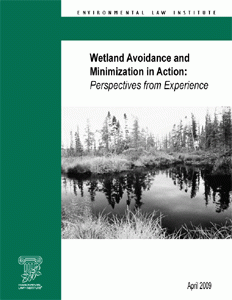State Constraints: State-Imposed Limitations on the Authority of Agencies to Regulate Waters Beyond the Scope of the Federal Clean Water Act

ELI has released a 50-state study identifying laws that can limit the ability of state agencies to protect wetlands, streams, and other water resources more broadly than federal law. The study finds that over two-thirds of all U.S. states have versions of these “stringency” and property rights laws.








